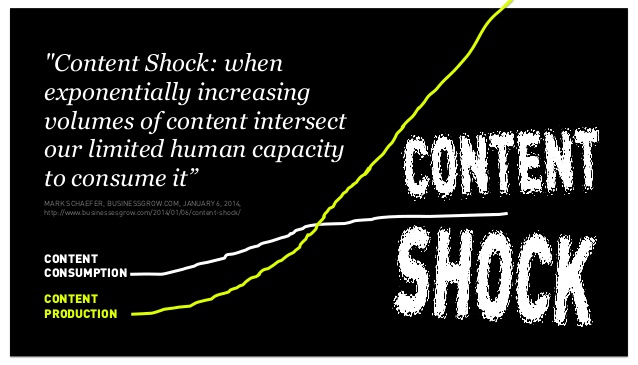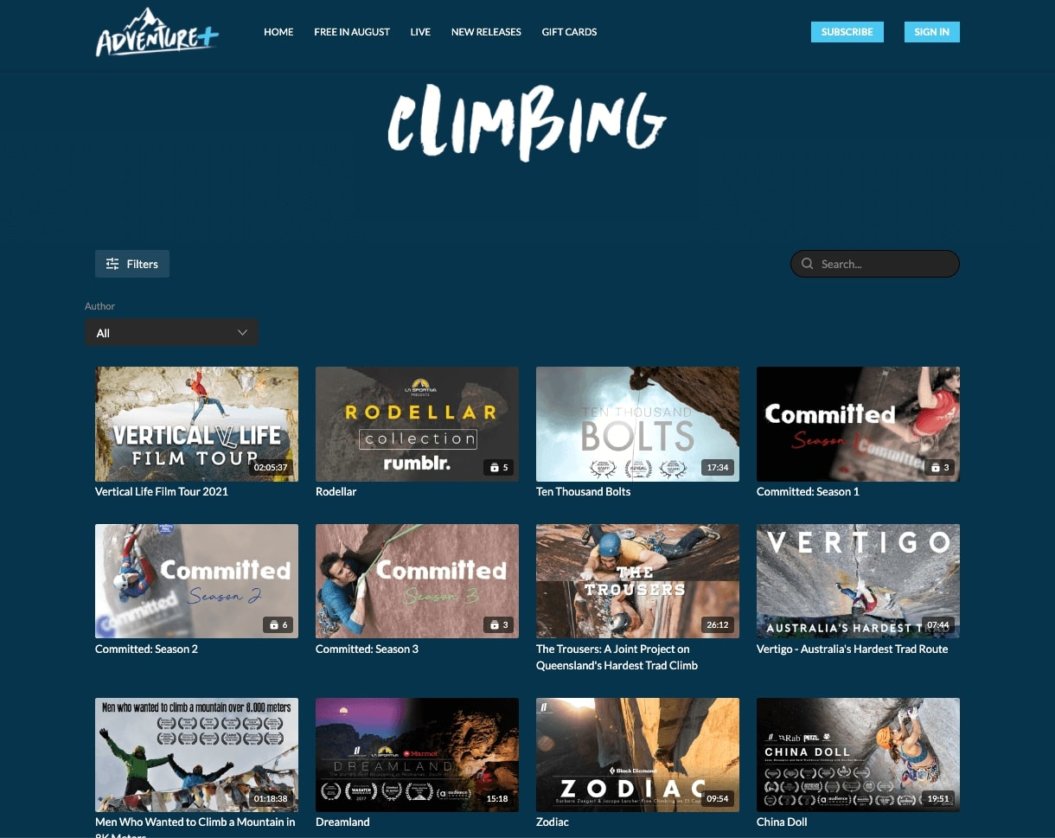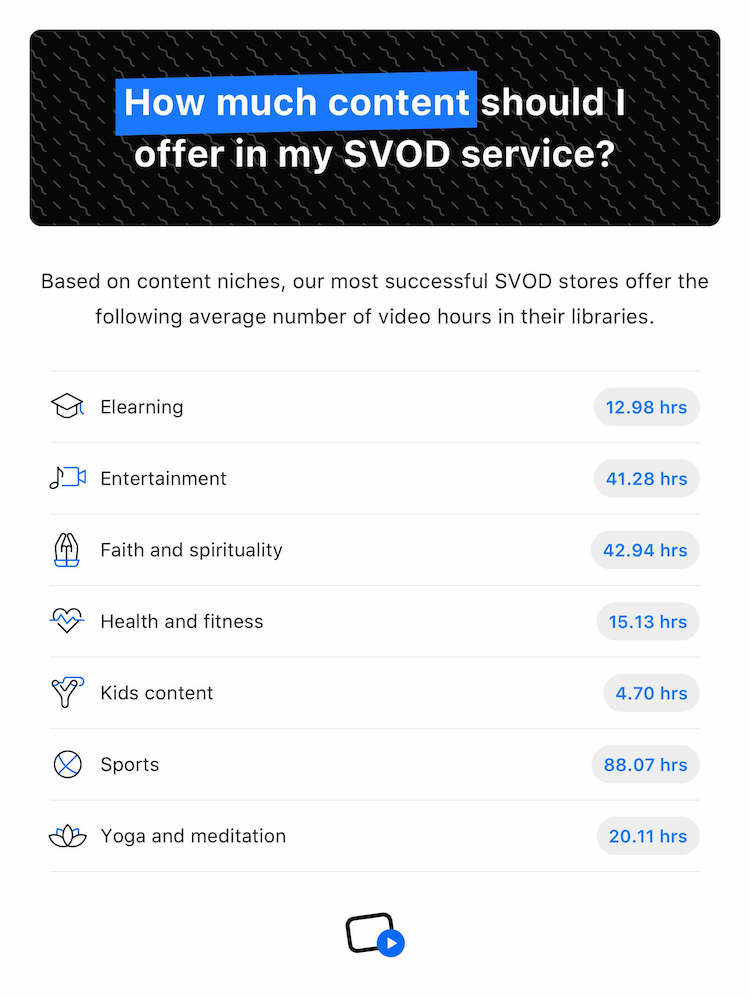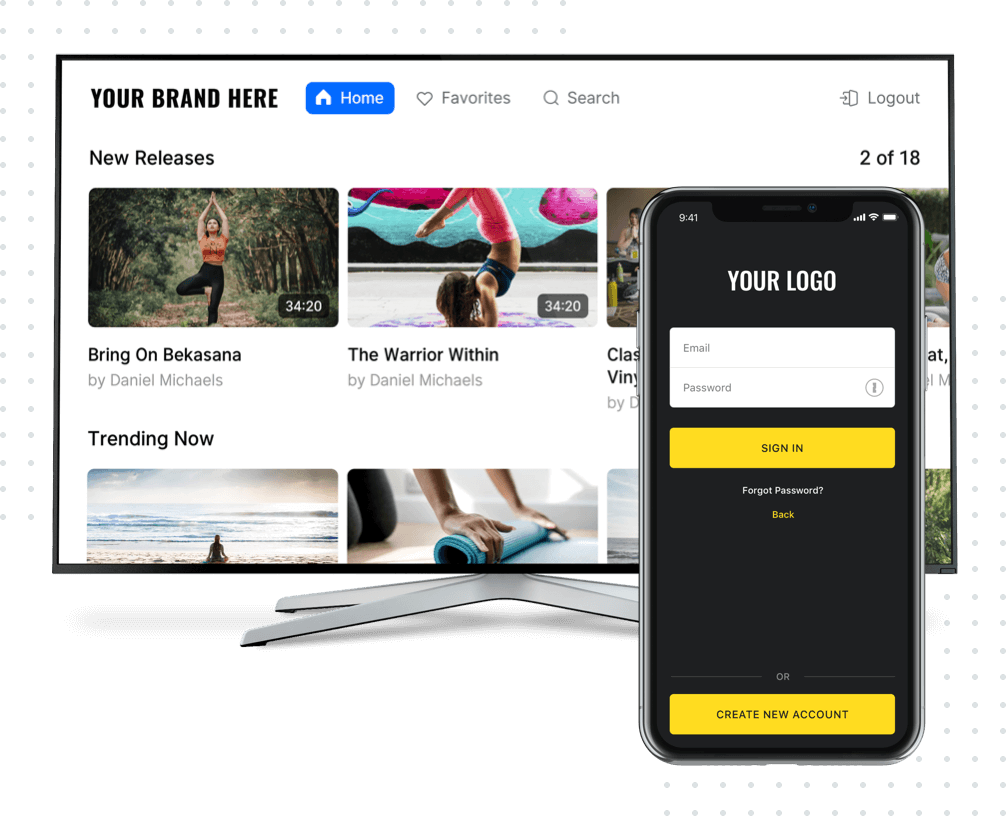If you’re reading this, we’re certain you have this inescapable feeling that you always need to create more content.
That if you don’t add a tonne of content to your SVOD service on a constant basis, your subscribers will leave you.
But is that really the case?
We have research to show that the secret to SVOD success isn’t more content. It’s less.
Releasing fewer videos and publishing them less often could actually satisfy your subscribers more, and convince them to stick around longer. Why?
Because many of them (without realizing it) are suffering from content shock…
What Is Content Shock (And How Does It Affect Your Subscribers)?
Content shock is a feeling of overwhelm about the sheer amount of media you’re inundated with. It’s closely connected to information overload.
People experience content shock when they have more content to consume than time to comfortably consume it.

Content shock may sound like a first-world problem, but it can have a tangible psychological impact on your subscriber’s lives.
People who experience content shock report higher levels of:
- Stress
- Anxiety
- Indecisiveness
They are also more likely to find themselves in a state known as Continuous Partial Attention, where they are constantly semi-distracted by potential new content.
This state is driven by the Fear Of Missing Out (FOMO); the internal pull to stay connected.
Both of these states exacerbate feelings of anxiety and stress. But, they also generate a much worse symptom: people feel less fulfillment in their lives.
Chasing an endless stack of content and dopamine hits fuels the anxious beast that lives in all of us, and leaves us feeling tired, worried, and bereft of purpose.
As a content creator, you are constantly adding to your subscribers’ list of content. And, this can be problematic for both you and them.
Because if you publish too much you risk creating an insurmountable backlog they can never work through. Which, in turn, can force subscribers to leave.
So, all of this begs the question…
How much content is too much content?
Well, let’s try and answer that together.
How Much Content Is Too Much? (How To Combat Content Shock)
To answer this question, we took a deep-dive into our customer data. Specifically, we looked at the amount of content published by our most successful SVODs.
We wanted to see:
- How many videos are in their library?
- How often does that number of videos change?
What we found was surprising: all of our most successful SVODs followed the same trend with the number of hours in their libraries.
Expert Tip: AVOD, TVOD, SVOD: Guide + SVOD Pricing Calculator for Creators
They find a “comfortable limit” for their video library. Then they keep it steady with quality content. Even if they consistently add new content.
The comfortable limit is a number of videos that is:
- Manageable for new subscribers
- Engaging for existing subscribers
Let’s take a look at an example.
Entertainment SVODs have an average of 41 hours in their library.

For brand new customers, this is enough film and TV for their subscription to be “worth it” without being too much.
For existing customers, the library is big enough for them to always be engaged. It’s enough to know it will take a few months to watch. But not so much you feel like you’ll never see it all.
When it comes time to add new content – however frequent that may be – they remove content that is poor performing (read: not being watched) from the library.
One in, one out. This helps maintain the comfortable limit.
The benchmark for the comfortable limit will vary in each niche. Here’s what our data showed as the average amount of library content among our most successful clients:

You can see that the numbers fluctuate a lot between niches. This is caused by the varying needs and uses of each niche’s content.
In the entertainment niche, it’s rare subscribers will watch the same movie or video twice. But, in the fitness niche, subscribers are likely to repeat their favorite class several times.
And, as any parent will tell you, their kids are happy to watch the same episode of a show over, and over, and over, and over, and over again.
But how do you find the comfortable limit for your site and your niche?
Well, that’s where testing and analytics comes in.
Testing & Analytics: It’s Your Job To Find The Content Sweet Spot
Every audience is different. Depending on your…
- niche
- target audience
- branding
…you will attract a different subset of people. Each with their own content shock tolerance.
Our data showed us another common trend among our most successful sites. We found that they focus on:
- Keeping a core of proven content
- Deleting poor performing content
- Experimenting with new quality content
Only when they find content that strikes a chord with their audience do they increase the volume of similar videos in their library.
Now…
It’s worth re-mentioning that the figures we showed you before are averages. There are businesses operating both above and below these limits.
That’s why we recommend using the numbers provided as a benchmark.
If you have a large content library, look to trim it down to these numbers. If you have a small one, look to build it up to these numbers. Then look for the response from your audience:
- Are they happy?
- Are they watching more or less content?
- Are more leads converting?
- Are more people leaving?
- Are more people staying?
You can find this out by communicating with your subscribers and paying close attention to your analytics.
If your analytics show that only 20% of your videos get watched, you probably need to purge your library and rethink your content strategy.
If your analytics shows that 70%+ of your audience have watched all of your videos, you probably need to create more.
So, look to hit these average numbers, and collect your own data along the way. Your subscribers will lead you to the sweet spot themselves.
How Netflix Deals With Content Overload
It may seem odd to argue that too much content is bad for your SVOD when, you know, Netflix offer 12,000+ titles to their viewers.
If you’re anything like me, you’ve spent 45 minutes looking for a film before deciding you do, actually, want to re-watch that episode of The Office.
But Netflix is aware of content shock and takes clear measures to protect its subscribers from it.
All of their content – save for a few big “originals” – is subject to their algorithm. It will only be shown to certain viewers based on their previous behaviors.
Which is why, thanks to my girlfriend’s ceaseless obsession with Riverdale, I am constantly bombarded with trash TV recommendations. Anyway…
The algorithm can instantly reduce 12,000+ overwhelming titles down to a manageable couple of hundred. It’s only when you take it upon yourself to search you see their full library.
Wrapping This Up…
Content shock is no joke. It’s a real problem that affects real people. But it also presents some good news for you.
The pressure you feel to always be creating isn’t real. In fact, sharing too much could damage your relationship with your subscribers.
The key is to find a “comfortable limit” of content and maintain it. Create what you need, delete what you don’t. You find this limit by experimenting and communicating with your audience.
Launch your own OTT apps
Up your SVOD-business game by launching streaming apps for mobile devices and TV.








